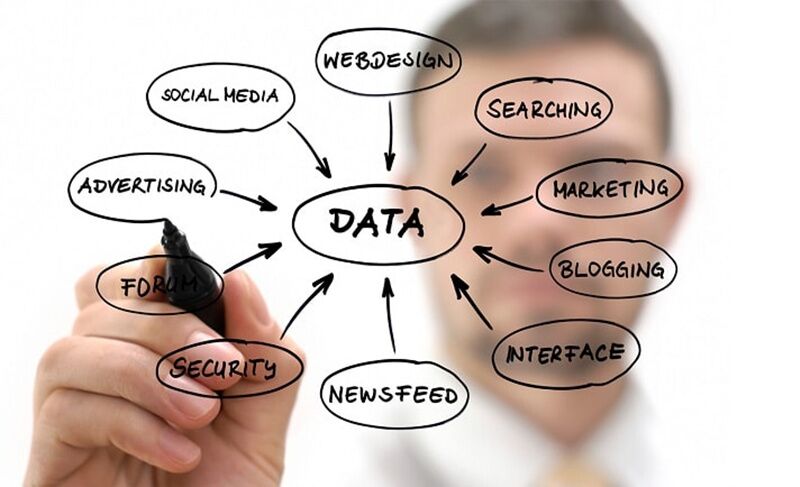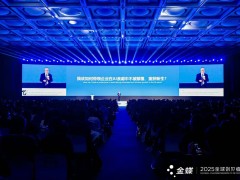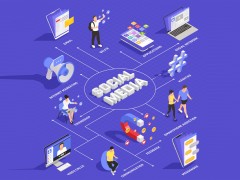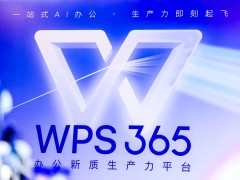Gartner又在吹牛逼?2017十大技术预测不见得都是真理 |双语
原文作者:Steve Andriole 编译:杨丽 Gartner上月刚刚对2017年十大战略性技术趋势进行了预测,分别是:AI与高级机器学习;智能应用;智能对象;VR与AR;数字孪生(Digital Twin);区块链和分布式总账;会话系统;网格应用与服务体系架构;数字技术平台以及自适应安全架构(Adaptive Security Architecture)。原文作者:Steve Andriole 编译:杨丽 Gartner上月刚刚对2017年十大战略性技术趋势进行了预测,分别是:AI与高级机器学习;智能应用;智能对象;VR与AR;数字孪生(Digital Twin);区块链和分布式总账;会话系统;网格应用与服务体系架构;数字技术平台以及自适应安全架构(Adaptive Security Architecture)。
 与此同时,其他机构也纷纷根据自己收集的数据对未来一年的行业趋势进行预测,其中,Villanova University的教授Steve Andriole就预测各行各业的公司机构将在未来使用以下技术:
与此同时,其他机构也纷纷根据自己收集的数据对未来一年的行业趋势进行预测,其中,Villanova University的教授Steve Andriole就预测各行各业的公司机构将在未来使用以下技术:
云计算(公有云&私有云) 机构化与非结构化大数据分析 数字化学习 BYOD自带设备 移动应用程序 可穿戴技术 定位技术 IOT物联网 电子支付系统 数字安全技术(尤其是多层认证)值得注意的是:AI技术,自动化推理,以及深度学习技术并未出现在Steve Andriole的预测中。 下文具体解释了Gartner的十大预测,而Steve Andriole对这些预测一一作出了点评。 趋势一:AI与高级机器学习 人工智能(AI)和高级机器学习(ML)由许多科技和技术(如:深度学习、神经网络、自然语言处理(NLP)组成。更先进的技术将超越基于规则的传统算法,创造能够理解、学习、预测、适应,甚至可以自主操作的系统。Gartner认为,到2020年前,AI将成为服务供应商的主战场。
评价:Gartner的预测显然有些道理,但更大的问题是资金何时到位。如果是一家中大型企业,那么可将广义上的AI技术定位为预测之一,并先行将预测中提及的应用程序投入运营。不过,关键是这种嵌入式的AI技术应该如何产生。因为这个重点不能放在如何为大多数企业创造一个新型的智能应用程序,除非你已经是一家AI技术公司,否则,你的重点应该在追踪嵌入在应用中的“智能”技术。这类技术能够支持业务流程,模型,以及从一开始就被定义为企业中“智能”模块的全新应用。趋势二:智能应用 Gartner分析师Cearley指出:“未来10年,几乎每个应用和服务都将包含一定的人工智能。这将成为一种长期发展趋势,不断发展和壮大人工智能和机器学习应用和服务。
评价:赞同。目前,在应用、基础设施和设备上的智能分量越来越重,当然,除非你是自动化推理或个人助理技术的创造者。Gartner预计,到2018年,全球最大的200家企业大多数都会使用智能应用,并利用大数据的完整工具包和分析工具来完善自身的产品,改善用户体验。大多数这种“使用”形式,将通过新的“智能”特性嵌入到某一行业中的现有应用程序中。趋势三:智能物件 智能对象超越执行刚性编程模型的物理物件,利用人工智能和机器学习实现高级行为,与周围环境和人类更加自然地互动。随着无人机、无人驾驶汽车和智能家电等智能物件不断普及,Gartner预计单独的智能物件将发展为协作的智能物件模型。
评价:这种预测实际上已经滞后了。趋势四:VR和AR 虚拟与现实的融合是数字业务价值的主要驱动力。Cearley认为:“到2021年,沉浸式消费和商业内容、应用程序的市场格局将发生巨大变化。VR和AR功能将与数字格网合并,形成一个更加无缝的设备系统,提供超级个性化和互相关联的应用和服务,精心编排用户收到的信息流。”
评价:实际上,虚拟现实和增强现实技术已经出现,并投入使用了。趋势五:数字孪生 数字孪生指的是物理事物或系统的动态软件模型,它依赖传感器数据理解其状态,对变化做出响应,并改进操作、增加价值。数字孪生包括一个由元数据、条件或状态、事件数据和分析形成的组合。
评价:Gartner预测道:“三到五年内,数以亿计的物件将由数字孪生呈现,这是一套物理事物或系统的动态软件模式。”但实际上,这并没有太多新意。而需要更多关注的是:智能生态系统的内容、广度和控制将继续从不同维度上进行扩展。例如,IOT和可穿戴设备均通过分析进行连接、推理并变得“智能”。
 趋势六:区块链和分布式总账
区块链是一种分布式分类账,由价值交换交易(以比特币或其他代币计算)按顺序分组成块。每个块链接到前一个块,使用加密的信任和保证机制,在对等网络进行记录。
趋势六:区块链和分布式总账
区块链是一种分布式分类账,由价值交换交易(以比特币或其他代币计算)按顺序分组成块。每个块链接到前一个块,使用加密的信任和保证机制,在对等网络进行记录。
评价:实际上,人们并不十分了解区块链技术。尽管区块链有巨大的潜力,被广泛认为是一种重要技术,但是如何能更为广泛的采用则十分具有挑战性。不过,事实上,区块链初创公司手头握有大量资金,需要比预期得更久才能获得技术的成熟和部署。而值得怀疑的是,需不需要等到2022年。像集中式和分布式集成,以及传统架构的兼容性等问题将持续存在。 因此,区块链的实施方需要进行深入合作,这深受加密货币交易过程的重视。区块链企业遇到的下一个业务挑战则是“市场份额”,也就是说,区块链这个行业将演变成为各方割据或一家独大的局面。会出现下一个“红帽”公司,还是很多“Hadoop”技术公司?总有一家公司会尝到区块链技术的甜头。趋势七:会话系统 目前,会话界面的重点是聊天机器人和支持麦克风的设备。然而,数字格网拥有一系列不断扩展的端点,人们通过这些端点访问应用程序和信息,或与他人、社交群体、政府和企业进行互动。设备网已不再局限于传统的台式计算机和移动设备,它涵盖人类可能与之交互的各类端点。
评价:目前,语音对系统界面非常重要。越来越智能、越来越交互的语音接口,将是“用户”与“机器”交互的首选方式。未来的交互模式是一种主动性的对话,这进一步增强语音交互。主动式语音协助,由用户位置等数据进行支持,将会在没有用户/机器问答的情况下也能指导和管理。会话语音的价值也会随着语义分析的加重而增加,该语义分析能够理解用户服务记录和流媒体社交媒体的各类数据,并进行推理。趋势八:网格应用和服务架构 在格网应用程序和服务架构(MASA)中,移动应用程序、网络应用程序、桌面应用程序和物联网应用程序将链接到广泛的后端服务网,创建被用户视为“应用程序”的内容。
评价:目前,在非理想的市场竞争中,专有基础架构数量上不占优势,那么所有的软硬件基础架构进行无缝集成和协同,难度不小。趋势九:数字技术平台 Gartner确定了实现数字业务新功能和商业模式的五个要点——信息系统、客户体验、分析和智能、物联网和业务生态系统。每个企业都将建立一些由这五个数字技术平台组成的平台。这些平台为数字业务提供基本的构建块,将成为数字业务的关键推动力。
评价:数字技术平台不断涌现出新事物,如分析,物联网,可穿戴设备,定位系统和云计算。但同时要谨记,所有这些事物并非割裂,而是相互交织。随着越来越多的基础架构和应用程序开始融合,企业必须了解这种融合如何影响他们的竞争力和应变能力。趋势十:自适应安全架构 Cearley认为:“成熟的安全技术应作为确保物联网平台的基准。监控用户和实体行为是物联网中尤其必要的一项重要补充,然而,物联网边界是许多IT安全专业人员产生薄弱领域的新前沿,因而经常需要新的补救工具和流程,而建立物联网平台必须将这些因素考虑在内。”
评价:Villanova大学的数据同样强调了数字安全的重要性。业务安全层面包括:审计、合规、政策和程序,还有安全技术本身。不过,业务端滞后于技术端,而技术端则滞后于设备和应用端。所有的安全架构必须不断适应,同时要认识到安全行业本质上是一个响应机构,旨在解决问题,并不在意这个问题存在了多久。综上所述,Gartner给出的十大技术性趋势预测还有待商榷。一是,这些技术预测的呈现方式很抽象。换句话说,抽象的呈现方式很难引起争议和讨论。二是,这些预测和很多其他的预测有雷同,比如说,谁不把AI作为潜在的重要技术呢?三是,这些预测很大程度上不具有可操作性,也就是说,并没有说明下一步如何进行。 除此之外,如果追踪、评估或测试这些技术的话,那么最为可能影响企业中的规则、流程和整个业务模式。而Villanova大学做出的技术预测则是根据公司在多个行业中试验所得,并非只是对技术的追踪和总结。公司应该追踪、评估、测试且衡量关于:新兴或潜在的破坏性技术可能对新产品开发、竞争定位、收入甚至盈利能力带来的影响。因此,所谓梳理总结出的预测,一定要有目标定位,而非仅限于推测。 英文原文: Gartner’s Top 10 Strategic Technology Trends for 2017 were recently published. They are insightful, but predictable. They’re also somewhat out of sync with data we – and others – have recently collected. Let’s look at the top 10 strategic technology trends for 2017 by first noting some findings we discovered from data collected in 2016 at Villanova University. We discovered that companies across many industries plan to pilot the following (rank-ordered) technologies: Cloud Computing (Public & Private) Structured & Unstructured Big Data Analytics eLearning BYOD (Bring Your Own Device) Mobile Applications Wearable Technologies Location-Based Technologies Internet-of-Things (IOT) ePayment Systems Digital Security Technologies (Especially Multilayer Authentication) These are the technologies and technology clusters that companies actually plan to pilot in 2016 and 2017. Noticeably absent from the list is AI/automated reasoning/deep learning – the first technology on the Gartner list. With this as backdrop, let’s look at what Gartner is telling us. Trend #1: AI & Advanced Machine Learning Gartner is clearly on to something here, but the larger question is about investment timing. If I were running a large or mid-sized company I’d place AI (broadly defined) on every watch list I could find and pilot the most promising applications that appeared on the list. The key point, however, is just how embedded AI has become. The emphasis should not be on creating new, smart applications for most companies (unless you’re an AI company), but to track the growing intelligence embedded in the applications available to enable their business processes and models, as well as whole new applications that were developed from the outset to be “smart” in your industry. #2: Intelligent Apps Same thing here: it’s about the growing intelligence within applications, infrastructures and devices (unless, of course, you’re one of the creators of automated reasoning or personal assistant technologies). But I just have to ask, does anyone doubt this observation?: “By 2018, Gartner expects most of the world’s largest 200 companies to exploit intelligent apps and utilize the full toolkit of big data and analytics tools to refine their offers and improve customer experience.” Most of this “exploitation” will occur via new “intelligent” features embedded in existing applications in specific industries. #3: Intelligent Things The prediction here feels more like a trailing than a tracking indicator. #4: Virtual & Augmented Reality Yes, virtual and augmented realties are already here – and working. #5: Digital Twins While I love the “digital twins” metaphor, there’s not much new here: “within three to five years, billions of things will be represented by digital twins, a dynamic software model of a physical thing or system.” The larger issue is the content, breadth and control of the intelligent ecosystem – which will continue to expand in multiple directions. IOT and wearables, for example, are about connectivity, inference and intelligence via analytics. #6: Blockchain Blockchain is here to stay. We just don’t yet know where, when or for how long. As I said last week, “while blockchain has enormous potential, there are challenges to widespread adoption. While it’s true that there’s a lot of funding for blockchain start-ups, it’s also true that we’ve seen technologies perceived as broadly important as blockchain take longer to mature and deploy than anticipated, though I doubt we’ll have to wait until 2022 for clarity. Issues like centralized versus distributed integration and legacy architecture compatibility will persist; there will be significant required cooperation among implementation parties for blockchain to become core to many flavors of transaction processing (beyond cryptocurrency). The business challenge for blockchain companies will be “market share”: will it be open and diffuse – “neutral” – or will it be aggressively proprietary or “closed.” Will a Redhat emerge or will there be countless Hadoops? Someone will win the blockchain sweepstakes.” #7: Conversational Systems Voice is the killer interface of the early 21st century. Others are in the pipeline but voice interfaces – especially if they’re intelligent and conversational (which they increasingly are) – will be the preferred way “users” interact with their “machines.” One of interaction models that will emerge – and will further empower voice interaction – is proactive (versus reactive) conversations. Proactive voice assistance – enabled by location and other data – will direct and manage without user/machine Q&A. The value of conversational voice will also increase by semantic analyses capable of understanding and inferring from all kinds of data including customer service records and streaming social media. #8: Mesh App and Service Architecture Seamless integration and interoperability across all hardware and software architectures (in a non-standard, competitive marketplace) remains the goal – which is challenging given the number or proprietary architectures out there. #9: Digital Technology Platforms Digital technology platforms are emerging around emerging around new centers of activity, like analytics, IOT, wearables, location-based systems and, of course, cloud computing. But remember that all of these (and other) activity clusters intersect more than they standalone. More and more infrastructures and applications are converging and companies must understand how that convergence affects their ability to pivot and compete. #10: Adaptive Security Architecture Our data at Villanova also underscores the importance of digital security. There’s the business of security – audits, compliance, policies and procedures – and the security technology itself. The business side lags the technology side (which lags the device and applications sides). All security architectures must continuously adapt while recognizing that the security industry is essentially a reactive one destined to chase solutions to problems it had no idea existed an hour, a day or a week ago. There are several problems with lists like these. First, they are presented at a very high level of abstraction. Put another way, they are high-level and therefore more difficult to dispute or even discuss. Second, they are similar to many, many other lists: who doesn’t have “AI” on their list of potentially important technologies? Finally, these kinds of lists are seldom “actionable”: very little guidance is provided to readers about exactly what to do next? A reasonable question would be, “if these technologies are so important what should I be doing right now?” The answer to the last question is track/assess/pilot the technologies most likely to impact business rules, processes and whole business models in your industry. The ten technologies we discovered at Villanova are technologies that companies plan to pilot, not just track, across multiple industries. While tracking is interesting and sometimes fun, companies should track, assess, pilot and measure the impact that emerging and potentially disruptive technologies might have on their new product development, competitive positioning, revenue and profitability, among other objectives. Lists should be purposeful, not just speculative.
评论
- 暂时没有评论,来说点什么吧







